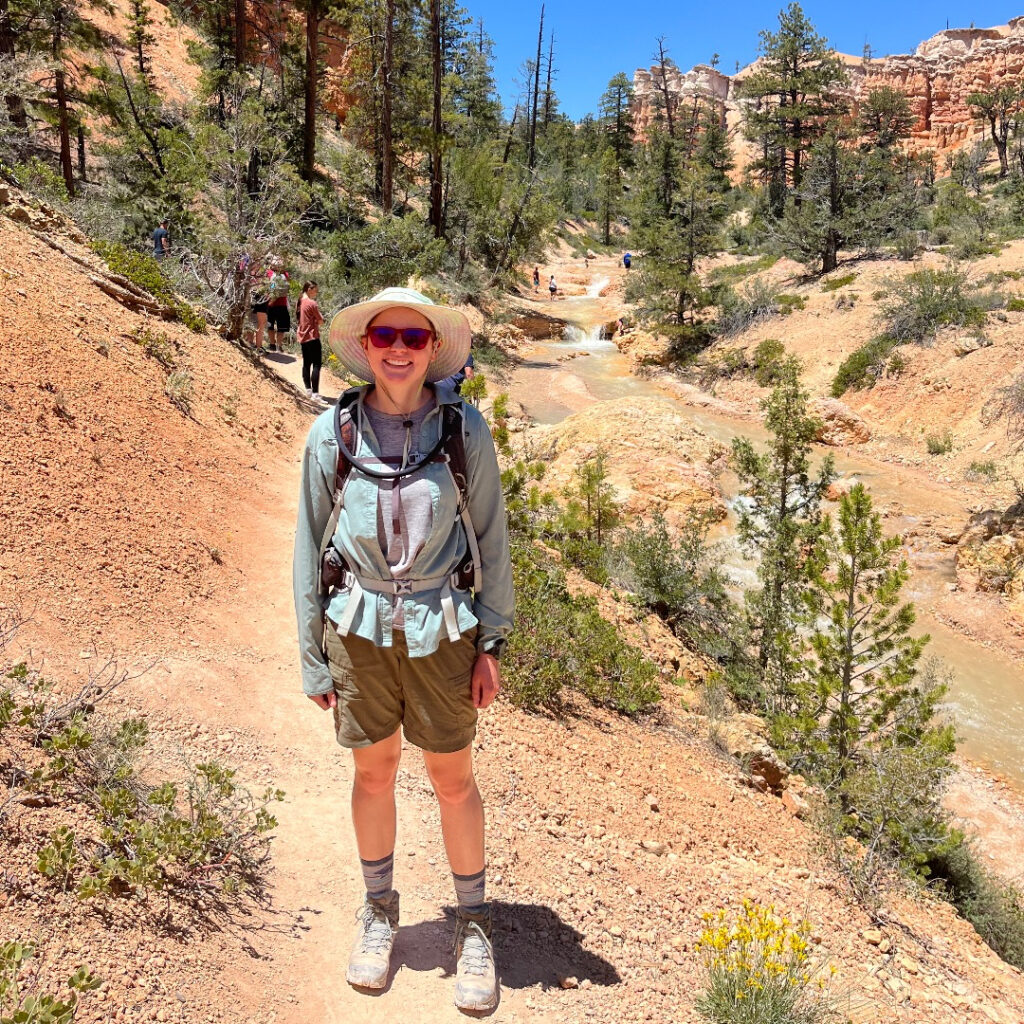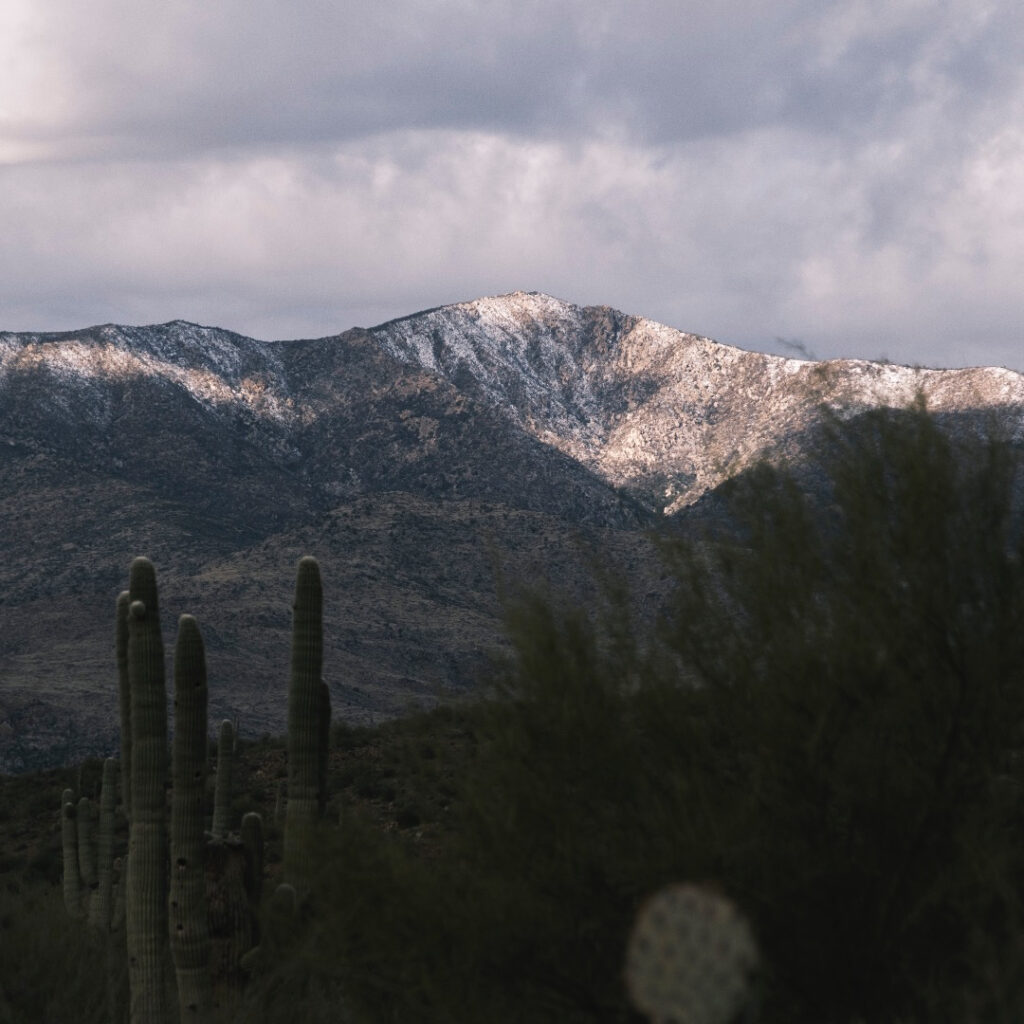Editor’s Note: With Pride Month coming to a close we wanted to give one more shout-out to Freetrail’s own Hunter Pardue and Kate Kacsuta who have been spearheading a fundraiser for the Trail Mix Fund. TMF is a PNW-based organization born from an effort to improve diversity in trail racing and remove potential financial barriers for runners. You can donate two ways – first by going here to directly donate or you can go grab a sticker from our store (designed by Katherine Tighe) where all proceeds will go directly to TMF as well.
The first race where I competed as a non-binary athlete was the Pride 5K in Flagstaff, Arizona in 2022. When the race registration opened in June, I signed up as a female – but by August, I finally recognized myself as non-binary and realized I wanted to race openly, as myself. So, I emailed the race directors, Nikki Hiltz, a professional non-binary runner, and their partner Emma Gee, asking if they could make sure my gender was changed on my registration. The first word in their response was “congratulations.” They assured me they corrected my gender on my registration and ended by wishing me well in the coming out process. “We are sending you the best vibes,” they wrote. It was a small email, a small fix, but the fact that they changed my gender to one that was authentic to me, was not small.
The first race I ever ran was my local 5K where I lined up on an October day with my sister and dad at age eleven. Even though it was more of a walk than a run, it didn’t matter to me – I was with my family on steep, rolling hills through a canvas of fall-touched leaves. I fell in love with the sport shortly after, through games of capture the flag with my school’s running club. Running didn’t stop there – I competed through high school, college, and now, recreationally. And in all this time, I’ve always competed as the gender that I was assigned at birth: female.
However, a little over a year ago, I began to question my gender identity, getting the sense that the word “female” did not describe my gender. I began to think of myself as just a person – neither a woman, nor a man. It took me nine months of work to truly come out to the people in my life. And the coming out process is still ongoing; I’ve discovered it’s not easy coming out as non-binary. Most people don’t know what it means, and having to explain myself is a terrifying thing.

Since I’ve begun to express my gender identity, I’ve faced a number of changes: being misgendered, getting strange looks when shopping in the men’s clothing section, and more pronounced gender dysphoria, particularly because of my body. There have also been changes in how I experience the things I enjoy, like struggling with how sex and gender driven the sport of running is. It’s reading race results that only include female and male divisions. Reading that World Athletics banned trans women from elite women’s competitions. Reading race predictions for only female or male races. Hearing announcers consistently misgender athletes like Nikki Hiltz, the only non-binary professional mid-distance runner I know, in races. Having to buy running clothes and shoes marketed for females because they better suit my body. Everywhere in the sport, there are reminders that you are supposed to be either female or male.
As a non-binary person, heading out on the trails remains a place I can go and still feel like myself. It’s a place I feel safe and comfortable, where I forget how our society views gender and I get to think only about my body as just that, a body, non-gendered, just something that allows me to run. It’s a place where I can be present and expressive and know who I am, a runner.
But when it comes to racing, social settings with specific rules and requirements, where I’m forced to select from what’s often only two gender categories, where I’m subject to being misgendered, where I’m sometimes subject to discrimination, I lose this sense of comfort. Often, I’m left wondering, where is the place for me in the sport I love? How can competitive running become a place of comfort and authenticity for me again?
Since coming out as non-binary, the absence of non-binary athletes or even acknowledgment of non-binary people has become glaringly apparent to me. I get misgendered often and at many races the only way I can compete (in the women’s division) is by misgendering myself, by voluntarily putting myself into one of two boxes. Just so I can have the opportunity to challenge myself in a sport that doesn’t even need to be assessed by gender parameters to be meaningful.
When people get my pronouns wrong, when I have to compete in the women’s division, I begin to feel that I am invisible as a non-binary person, that being who I feel I am is not something I can be in the world. It perpetuates gender dysphoria and makes me feel invalid. Yes, I can feel personally valid and authentic about my own self, but that doesn’t mean that when everyone else ignores my identity, my pronouns, and my sense of self, it doesn’t hurt me.
In so many places and at so many races we continue to act as though non-binary people don’t exist by creating competitions with two gender categories, often defended with the argument of “fairness,” to protect women’s sports. And this issue extends beyond non-binary people, to trans men, and especially trans women, who have been targeted by a number of recent proposals to ban their participation in women’s sports altogether.

Certainly, we’ve made progress. Visibility for non-binary people is expanding. More and more races are including non-binary as a choice for an athlete’s gender category (Western States Endurance Run, The Rut, Aravaipa Races, Broken Arrow Skyraces). Still, many of these policies dictate that the athlete who identifies as non-binary selects female or male for results and awards. An exclusive non-binary division with its own prize money is rare. And UTMB, the biggest trail race in the world, is still developing policies on gender. Turning to the roads, even the renowned Boston Marathon, which just this past April had its first non-binary division, did not offer prize money for the division as it does for the female and male ones. Yes, races including non-binary as a gender option and non-binary divisions is a step forward, but when the non-binary division is not treated as its own (i.e., when athletes have to select female or male for results and awards) or not given prize money, it suggests non-binary people are lesser, not as worthy of recognition and compensation for their achievements as female and male athletes.
The question is how much longer are we going to cling to false fairness, to claim that races and running are about the competition, making it “fair”? How much longer are we going to disregard the real reason we all run—to challenge ourselves, to embrace new experiences, to let variables outside of our control govern us, to put ourselves on the trail past midnight, to be in a community of other people who do the same? How much longer are we going to convince ourselves that gender has anything to do with this?
There is nothing more fair or authentic as moving one’s body over a trail, a road, or up a hill than providing the opportunity for everyone to run and race as their true selves. We cannot challenge ourselves physically, we cannot be present on the trails, and we cannot run or race to our potential if we are told that we cannot be ourselves in the process. Running will not be fair until we create space for everyone, until we create a space where sex and gender do not determine the sport.
On the morning of the Pride 5K, I lined up and listened to Nikki and Emma explain that the race’s purpose was to support the Trevor Project. All they asked of us was that we show up as ourselves. Like many Octobers ago, I found myself walking much of the race, this time due to a recovering injury. I still had a smile but now it was because I was competing in a way that validated how I felt about myself. At the awards ceremony, I happily watched the top non-binary athletes claim their medals and prize money just as the female and male athletes did. It was a day where I felt valued for who I was. It was a reminder that there were others like me, that we non-binary people were here wanting to compete and move our bodies just like everyone else.
I started running because it was something I could do with my dad and sister. I fell in love with running because I could challenge myself, move my body, explore on foot, and build relationships. Never did I think about competition. Never did I think about gender. Because, at its heart, these things are not what running is about.
Resources:
- Please visit https://nonbinaryrunning.com/ to learn more about non-binary inclusion in running.
- Also recommended: “An Open Letter to the Trail and Ultra Community From Non-Binary Athletes” onTrail Runner.
- Consider supporting The Trevor Project, a nonprofit that offers crisis support services for LGBTQ+ youth.
- Check out Episode 38 of Trail Society with Lee Grabarek.
